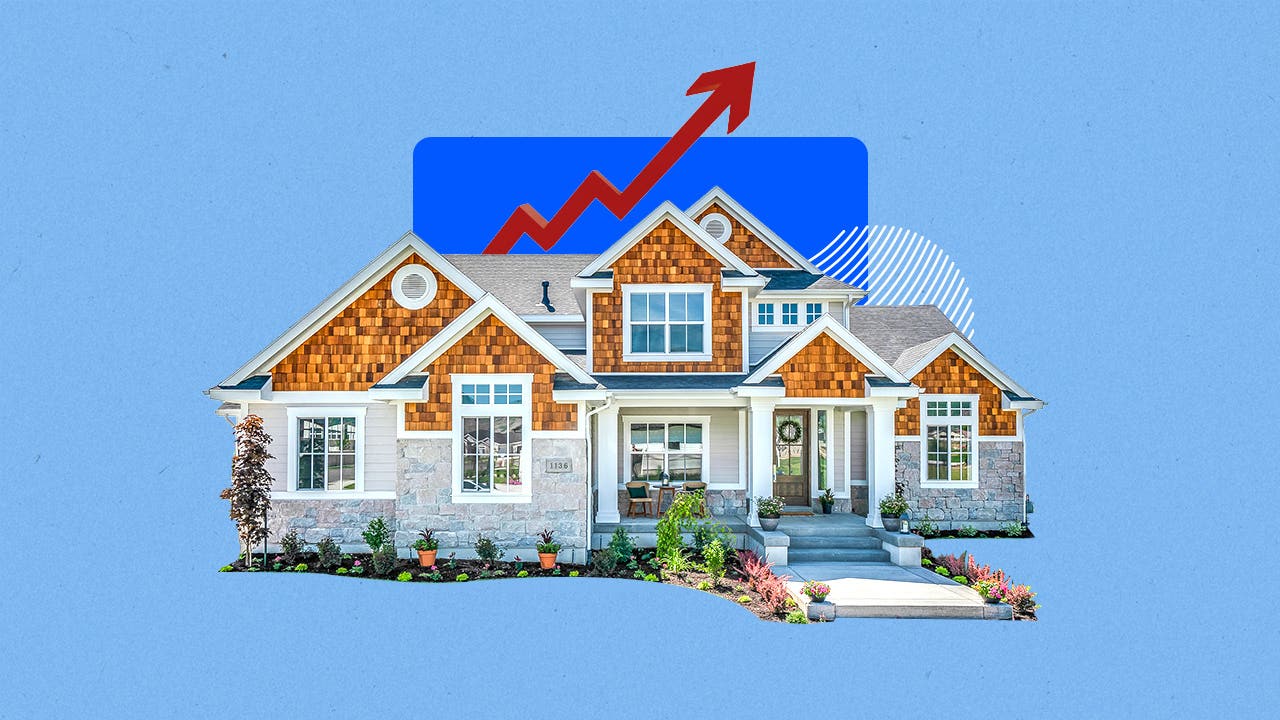Where are mortgage rates headed in May 2023?

The Bankrate promise
At Bankrate we strive to help you make smarter financial decisions. While we adhere to strict , this post may contain references to products from our partners. Here's an explanation for .
Mortgage watchers expect rates to trend down by the end of the year. Will that long-awaited decline begin this month?
May mortgage rate predictions
Mortgage rates are likely to remain volatile this month. While most forecasters call for them to ease below 6 percent later this year, that prediction assumes the Federal Reserve’s war on inflation will continue to bear fruit.
“It’s hard to know exactly where rates will go because there are a lot of mixed signals in the economy,” says Lisa Sturtevant, chief economist at Bright MLS, a multiple listing service operating in the Mid-Atlantic.
The first market-moving event on the calendar comes May 3, when the Fed unveils its latest position on interest rates. Many expect a 0.25 percentage point increase, following an identical boost at the central bank’s March 22 meeting.
While the Fed doesn’t dictate mortgage rates, the central bank’s policies ripple through the mortgage market. Since early 2022, mortgage rates have been driven by inflation — and by how aggressively the Fed has responded to rein it in.
If the Fed looks to be moving to the sidelines after an early May rate hike and we continue to see moderating inflation pressures, mortgage rates could slide back to the low 6s.— Greg McBride, Bankrate Chief Financial Analyst
Many view the central bank’s actions as the clearest indicator of the direction of mortgage rates.
“It all depends on the Fed,” says Doug Duncan, chief economist at mortgage giant Fannie Mae.
“If the Fed looks to be moving to the sidelines after an early May rate hike and we continue to see moderating inflation pressures, mortgage rates could slide back to the low 6s, a level not seen since September,” says Greg McBride, chief financial analyst for Bankrate.
The Mortgage Bankers Association predicts rates will fall to 5.5 percent by the end of 2023 as the economy weakens. The group revised its forecast upward a bit — it previously expected rates to fall to 5.3 percent.
Meanwhile, Fannie Mae’s Duncan expects rates to be in the “high 5s” by the end of 2023. He bases that forecast on the assumption the central bank won’t cut rates in 2023.
What’s driving mortgage rates this month
Mortgage rates bounced around in April, frustrating homebuyers who hoped to make a deal during the spring selling season.
The 30-year fixed rate climbed from 6.32 percent the week of April 5 to 6.61 percent the week of April 19, according to Bankrate’s national survey of lenders. Then they retreated to 6.48 percent in Bankrate’s April 26 survey.
Rates fell in part because the banking industry’s woes were back in the headlines. In late April, fresh concerns about the financial sector spurred a flight to safety by investors. As a result, 10-year Treasury yields dipped. The 10-year Treasury is the benchmark most closely tied to 30-year mortgage rates.
The new worries echoed the March banking crisis, although not as loudly. Mortgage rates fell sharply after Silicon Valley Bank and Signature Bank failed, March 10 and March 12, respectively.
Inflation, too, has been a hallmark of the U.S. economy’s strong rebound from the pandemic recession of 2020. Nearly everyone expected the economy to fall into a recession in late 2022 or early 2023, but that hasn’t happened, at least not yet.
“With first-quarter GDP numbers showing a slowing economy, recession fears have been boosted, which could mean that we will see mortgage rates edge lower in the months ahead,” says Sturtevant. “Mortgage rates typically fall during recessionary periods.”
Political bickering — in the form of a partisan standoff over the federal budget — could also affect mortgage rates.
“The debt ceiling is the ultimate wild card, and markets will get very nervous very fast as the deadline approaches,” says McBride.
Another factor to consider is the “the spread,” the gap between 10-year Treasury yields and 30-year mortgage rates. That margin has been unusually high for the past year or so.
“If that gap were to narrow, mortgage rates could decline,” says Sturtevant.
Mortgage rates and homebuying season
The spring homebuying season is officially underway, and these are nervous times for buyers. Home prices remain elevated, and mortgage rates have fluctuated day to day.
“Even if rates do come down, we’re not going to see the sub-3 percent rates we had during the pandemic,” says Sturtevant, “and the decline in rates is not going to solve the housing affordability challenge which has gotten persistently worse, particularly for first-time homebuyers. In markets with extremely low inventory, lower rates could actually exacerbate the housing affordability crunch if they bring more prospective buyers into an already competitive market.”
Related Articles



